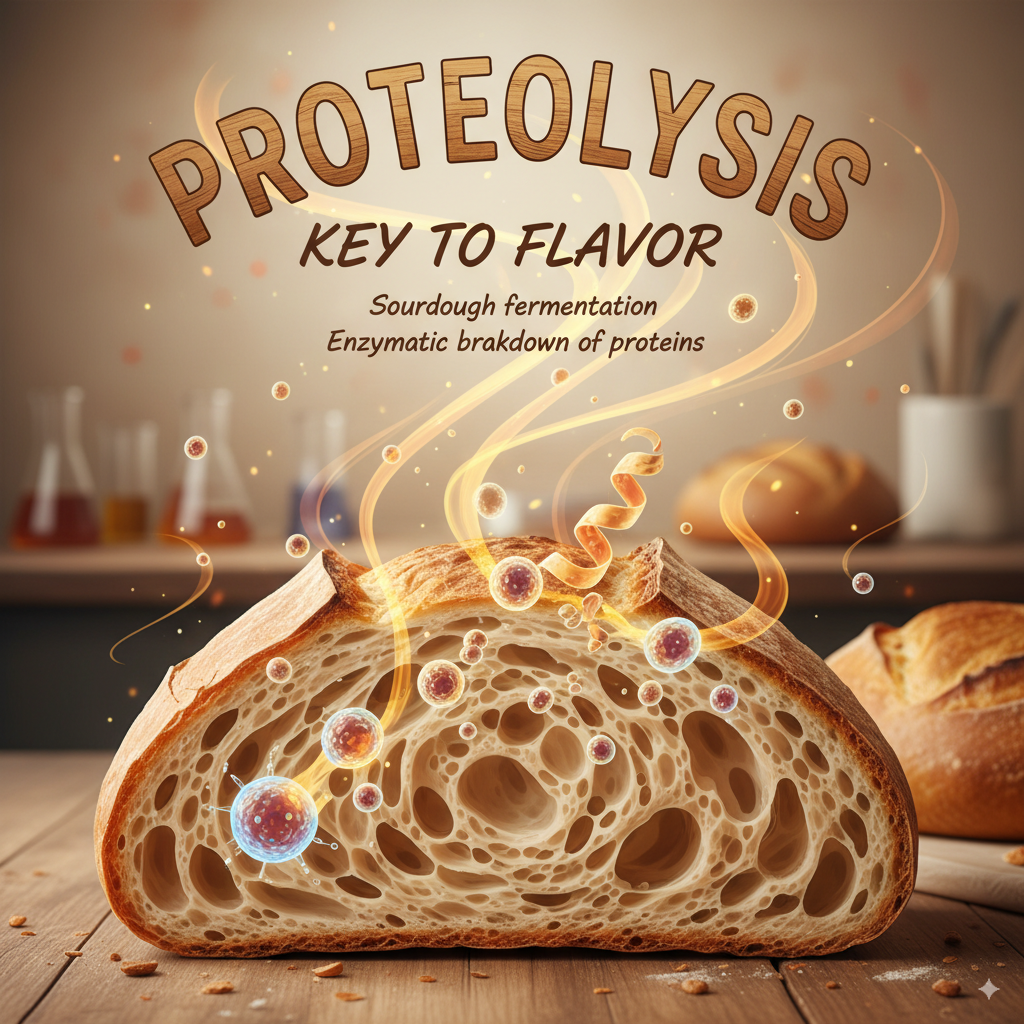Proteolysis – Key to Flavor
Sourdough fermentation is a fascinating biological process driven by the collaboration of diverse microorganisms, including bacteria and yeast. Proteolysis, an essential aspect of this fermentation, involves the enzymatic breakdown of proteins into smaller peptide fragments and amino acids. This process significantly contributes to the unique taste, aroma, and texture of sourdough bread, making it a subject of great scientific interest.
Enzymes Involved in Proteolysis: Various enzymes play a crucial role in proteolysis during sourdough fermentation. These enzymes include proteases, peptidases, and endopeptidases. Proteases are responsible for the initial breakdown of proteins, while peptidases further degrade peptides into smaller units. Endopeptidases cleave proteins internally, generating a wide range of peptides with different functionalities and flavors.
Microorganisms Driving Proteolysis: Lactic acid bacteria (LAB) and yeast are the primary microorganisms involved in sourdough fermentation. LAB, such as Lactobacillus and Pediococcus species, produce a diverse array of proteolytic enzymes, contributing to protein degradation. Additionally, certain yeast species, including Saccharomyces cerevisiae, also possess proteolytic activity. The interplay between these microorganisms and their enzymatic capabilities influences the extent and specificity of proteolysis.
Flavor Development through Proteolysis: Proteolysis generates peptides and amino acids, which are precursors to various flavor compounds in sourdough bread. During fermentation, these compounds undergo complex chemical reactions, leading to the production of volatile organic compounds that contribute to the distinctive aroma and flavor profiles of sourdough bread. Key flavor compounds arising from proteolysis include aldehydes, ketones, esters, and sulfur-containing compounds.
Texture Enhancement through Proteolysis: Proteolysis influences the texture of sourdough bread by altering the gluten network, a crucial component responsible for dough elasticity and structure. Proteolytic enzymes break down gluten proteins, reducing their viscoelastic properties. This process leads to improved crumb softness, increased moisture retention, and enhanced shelf life.
Potential Health Benefits: Apart from its impact on flavor and texture, proteolysis in sourdough bread offers potential health benefits. The breakdown of proteins into peptides and amino acids enhances their bioavailability, making essential nutrients more easily absorbed by the body. Additionally, certain bioactive peptides generated through proteolysis possess antimicrobial, antioxidant, and blood pressure-lowering properties, contributing to the overall health-promoting potential of sourdough bread.
Factors Influencing Proteolysis: Several factors influence the extent and efficiency of proteolysis in sourdough fermentation. These include temperature, pH, hydration level, fermentation time, microbial composition, and choice of flour. Understanding and manipulating these factors can provide bakers with the ability to control and optimize proteolysis to achieve desired sensory attributes and nutritional benefits.
Proteolysis is a fundamental process in sourdough fermentation, driving flavor development, texture enhancement, and potential health benefits. The interplay between enzymes, microorganisms, and fermentation conditions shapes the unique characteristics of sourdough bread. Further research in this field holds promise for unraveling the intricate details of proteolysis, enabling us to harness its potential to create bread that not only delights the senses but also contributes to human well-being.

Pingback: Sourdough Fermentation Activities - sourdoughsavvy.com